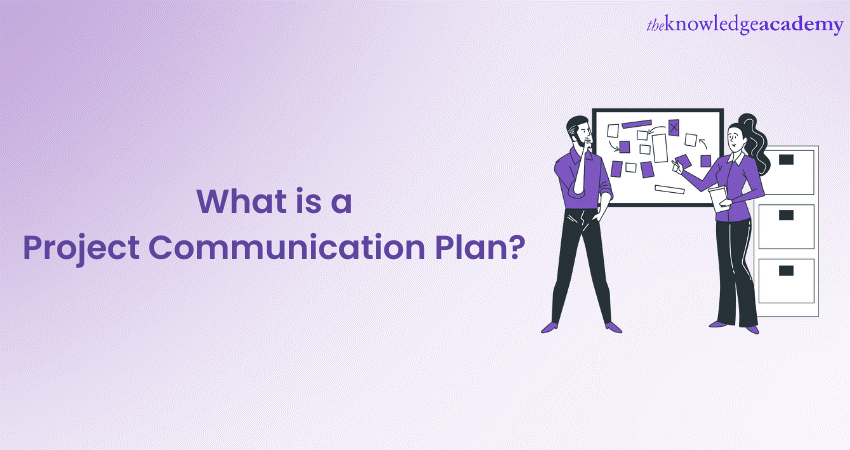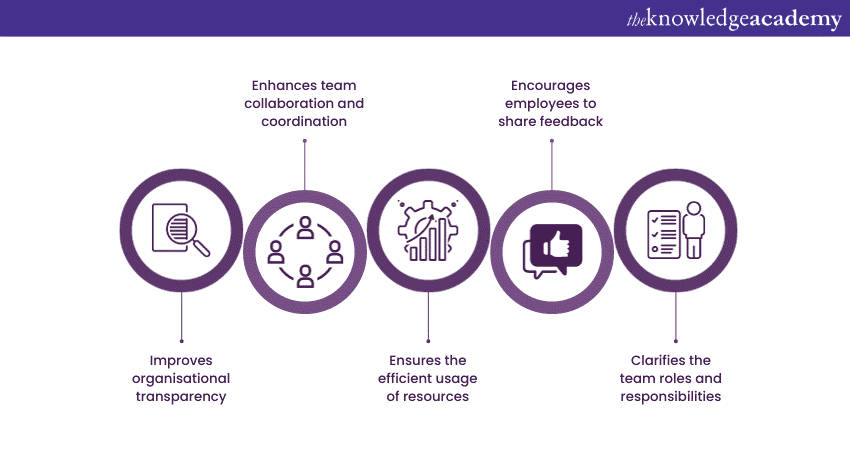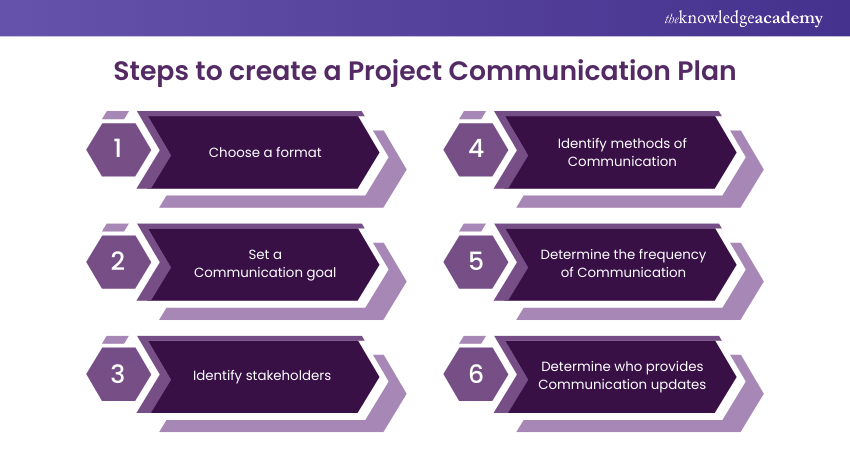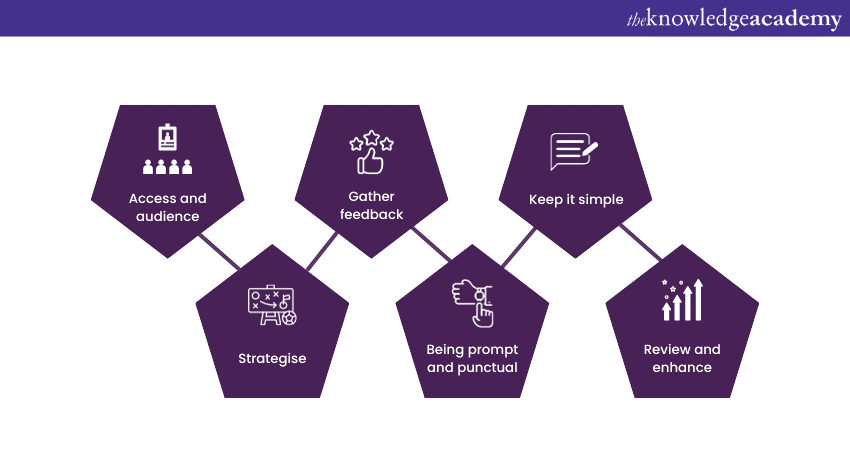We may not have the course you’re looking for. If you enquire or give us a call on 01344203999 and speak to our training experts, we may still be able to help with your training requirements.
Training Outcomes Within Your Budget!
We ensure quality, budget-alignment, and timely delivery by our expert instructors.

In the Project Management domain, success isn't just about ticking off tasks and meeting deadlines; it's way more than that. That's where the Project Communication Plan steps in as the unsung hero of Project execution. However, most Project Managers are unaware aboutthis Plan.
Given this situation, you can read this blog to thrive in the bustling landscape of Project collaboration and coordination. This blog also highlights the importance of learning about this Communication Plan and ensuring smooth delivery of the Projects. So, delve in and read this blog to learn What is a Project Communication Plan. You can also explore its key benefits, along with the best practices of utilising this Plan.
Table of Contents
1) Understanding What is a Project Communication Plan
2) Benefits of a Project Communication Plan
3) Steps to create a Project Communication Plan
4) Communication Plan examples
5) Best practices while using your Project Communication Plan
6) Conclusion
Understanding What is a Project Communication Plan
A Project Communication Plan primarily determines the dissemination of critical information to stakeholders during the Project’s course. Additionally, it establishes when, how, and who will receive the Communication. Along with it, this Communication Plan entails how frequently those recipients can anticipate receiving it.
For example, if you oversee a new website’s launch, you must know how to divide the work into several activities. Those activities might include wireframing, copywriting, and coding. In addition, you must decide what you will say to your stakeholders at every Project stage. For this, make sure to incorporate the following in your Project Communication Plan:
a) The Communication Plan's objectives
b) Details about the roles and stakeholders
c) The data that must be communicated to stakeholders
d) The means by which people communicate
e) The frequency of information that each stakeholder would prefer to receive

Benefits of a Project Communication Plan
Organisations can better understand what is a Project Communication Plan, by improving employee engagement, aligning Communication approaches and spending work time efficiently. Here are the key advantages of utilising a meticulously drafted Project Management Communication Plan:

Improves organisational transparency
A thorough Project Communication Plan enhances organisational transparency. The following key pointers can give you a better overview of how it does the same:
a) A thorough Project Communication Plan improves organisational transparency by clarifying Project objectives and keeping stakeholders informed.
b) It also enables proactive problem identification and resolution within the team, fostering a clearer understanding of their impact on Project development.
Enhances team collaboration and coordination
A Project Communication Plan can impact work quality in multiple ways. Here are some of those crucial tactics:
a) Utilising a shared document fosters collaborative work processes among team members, besides encouraging constructive feedback and timely task completion.
b) It can also strengthen team relationships and improve overall work quality throughout the Project lifecycle.
Ensures the efficient usage of resources
By establishing clear protocols for resource allocation and utilisation, a well-structured Project Communication Plan boosts transparency. The following points can better highlight the same:
a) A variety of tools are used throughout the Project, but without effective Communication, understanding their use can be confusing.
b) Implementing a Project Communication Plan centralises Communication, reduces time wasted across multiple applications and refocusing the team's efforts.
Encourages employees to share feedback
Creating an open and supportive Communication environment fosters employee engagement. Hence, a well-structured Communication Plan in Project Management ensures the following advantages:
a) Project Managers should establish a culture of open Communication to address potential employee hesitations.
b) Furthermore, they must consider team members’ feedback to foster a positive and productive work environment.
Equip yourself with the tools to identify and mitigate potential Project risks with our Project Management Courses – join today!
Clarifies the team roles and responsibilities
a) Establishing clear delineations of roles and responsibilities within the Project team fosters accountability. Its benefits are further discussed below:
A solid Project Communication Plan ensures stakeholders understand team members' roles and responsibilities, as well as the decision-making process.
Having channels for feedback and comments exchange can enhance Project coordination and stakeholder engagement.
Steps to create a Project Communication Plan
Here is a list highlighting the various steps which you can follow to create a Project Communication Plan:

1) Choose a format
As an initial step, you must choose a platform that can easily provide you with feedback on your Communication Plan. Additionally, many Project Managers create their Communication Plan using a Word document or a spreadsheet. However, you should go for a more visual option, like a timeline or a flowchart, that clearly explains the Communication frequency.
2) Set a Communication goal
Whatever you hope to achieve, you should craft a successful Communication Plan. Your goal must keep stakeholders updated on the Project status, so they continue to advocate for it.
3) Identify stakeholders
Numerous stakeholders collaboratively work on a Project. That is why you must identify the stakeholders with whom you’ll communicate throughout the Project and list them. In addition, you must prioritise each stakeholder based on their level of influence and interest. This can help you determine the level of Communication required.
4) Identify methods of Communication
Your Communication Plan serves the crucial function of ensuring that pertinent information reaches the appropriate stakeholders. In addition to identifying stakeholders, it should specify the methods of Communication.
The chosen method may vary based on the type of information being conveyed. Possible Communication methods include weekly check-ins, meetings (in-person or virtual), status reports, formal presentations, surveys, Project dashboards, etc. Selecting the appropriate method is essential for effective dissemination of information.
5) Determine the frequency of Communication
You should specify the frequency of each Communication type and how often you'll engage with stakeholders. Also, you must ensure that this information is included in your Project Management Communication Plan. Scheduling these Communication intervals in your calendar can ensure timely and consistent engagement.
6) Determine who provides Communication updates
In many instances, the responsibility for managing Communication within a Project lies with the Project Manager. However, if this role is not explicitly assigned to the Project Manager, it becomes imperative to designate a specific individual responsible for providing updates. This ensures that there's clarity and accountability regarding Communication channels and information dissemination.
Give your Projects a better structure by signing up for our Introduction to Project Management Certification Course now!
Communication Plan examples
Each Communication Plan is tailored to the specific needs of your client, team, and Project. These following examples can guide you to craft your Communication strategy.
a) Project update protocol: This refers to the method and frequency of updating stakeholders, team members, and clients about the progress, challenges, and milestones of a Project. For instance, establishing a weekly email update with key highlights and upcoming tasks can be part of the Project update protocol.
b) Customer complaint resolution: This outlines the steps and channels through which customer complaints are received, acknowledged, investigated, and resolved. For example, a customer service Communication Plan may include a dedicated email address or hotline for complaints, along with a timeline for resolution and follow-up.
c) Order fulfillment: This involves the Communication strategy for managing orders from placement to delivery, including notifications, tracking, and addressing any issues that arise. An example could be an automated email confirmation upon order placement, followed by updates at key stages of fulfillment and a feedback mechanism upon delivery.
d) Web copy creation: This pertains to the process of developing and refining content for a website, including Communication between content creators, editors, and stakeholders. For instance, a Communication Plan for web copy creation might include regular meetings or check-ins to discuss content requirements, deadlines, and revisions.
Best practices while using your Project Communication Plan
An effective Project Communication Plan typically has a general guideline of ‘6 C’s’, which are ‘Clear’, ‘Concise’, ‘Correct’, ‘Considerate’, ‘Courteous’ and ‘Complete’. Team members must follow the six facets of this guideline and adhere to the best practices to reap maximum benefit from their Project Management Communication Plan. These best practices involve the following:

a) Access and audience: The Project Manager must ensure that the Project Communication Plan reaches every team member, all members of the client’s team and the leadership team. It must also reach all the Project’s vendors, who are able to consume the details in a meaningful manner.
b) Strategise: Project Managers must draft a Communication Plan, which includes a well-researched and formulated strategy. This strategy is intended to drive the momentum for the implementation of the Communication Plan among the internal and external stakeholders.
c) Gather feedback: Project Managers should nurture an open, transparent and trackable channel through which they can collect, manage and act on the feedback. Clear and honest Communication within a team significantly decreases human error by miscommunication. It especially saves the team time that is otherwise used to rectify another member’s work.
d) Being prompt and punctual: The team must maintain a regular and consistent stream of Communication. The Communication can be mutually agreed upon at regular intervals to practice promptness and punctuality.
e) Keep it simple: It is probably one of the toughest practices to keep matters simple in a Project. Employees can be prone to overcomplicating their modes and content of Communication. This is why they must assess if their targeted audience is able to understand and consume the conveyed information.
f) Review and enhance: Project Managers must regularly review the efficiency of their Project Plan with their intended Communication goals and enhance it accordingly.
Work effectively with stakeholders by signing up for our Project And Infrastructure Financing Training now!
Conclusion
We hope that you have understood What is a Project Communication Plan and how it outlines the most important information for the Project’s stakeholders and team members. It basically helps the Project Manager determine the recipients and frequency of Communication. Project Managers ensure that their Project is on track with a meticulously written Project Management Communication Plan.
Deliver Projects effectively by signing up for our Project Management Course now!
Frequently Asked Questions

A strategic Project Communication Plan requires the inclusion of several essential components. Those core elements include Plan purpose, situational analysis, audience personas, messaging, channels, Communications matrix, goals, strategies, tactics, calendar, and budget.

Different stakeholders, phases, and goals require different types of Communication. That's why developing a Communication framework for your Project is essential. A Communication framework is a tool that helps you Plan, execute, and evaluate your Communication activities throughout the Project lifecycle.

The Knowledge Academy takes global learning to new heights, offering over 30,000 online courses across 490+ locations in 220 countries. This expansive reach ensures accessibility and convenience for learners worldwide.
Alongside our diverse Online Course Catalogue, encompassing 17 major categories, we go the extra mile by providing a plethora of free educational Online Resources like News updates, Blogs, videos, webinars, and interview questions. Tailoring learning experiences further, professionals can maximise value with customisable Course Bundles of TKA.

The Knowledge Academy’s Knowledge Pass, a prepaid voucher, adds another layer of flexibility, allowing course bookings over a 12-month period. Join us on a journey where education knows no bounds.

The Knowledge Academy offers various Project Management Courses, including the Project Management Office Fundamentals Course, Programme Management (PgM) Fundamentals Training, and Jira Training. These courses cater to different skill levels, providing comprehensive insights into the Digital Project Management Process.
Our Project Management Blogs cover a range of topics related to Project Communication, offering valuable resources, best practices, and industry insights. Whether you are a beginner or looking to advance your Power BI skills, The Knowledge Academy's diverse courses and informative blogs have got you covered.
Upcoming Project Management Resources Batches & Dates
Date
 Project Management Certification Course
Project Management Certification Course
Fri 21st Jun 2024
Fri 19th Jul 2024
Fri 16th Aug 2024
Fri 13th Sep 2024
Fri 11th Oct 2024
Fri 8th Nov 2024
Fri 13th Dec 2024
Fri 10th Jan 2025
Fri 14th Feb 2025
Fri 14th Mar 2025
Fri 11th Apr 2025
Fri 9th May 2025
Fri 13th Jun 2025
Fri 18th Jul 2025
Fri 15th Aug 2025
Fri 12th Sep 2025
Fri 10th Oct 2025
Fri 14th Nov 2025
Fri 12th Dec 2025







 Top Rated Course
Top Rated Course


 If you wish to make any changes to your course, please
If you wish to make any changes to your course, please


